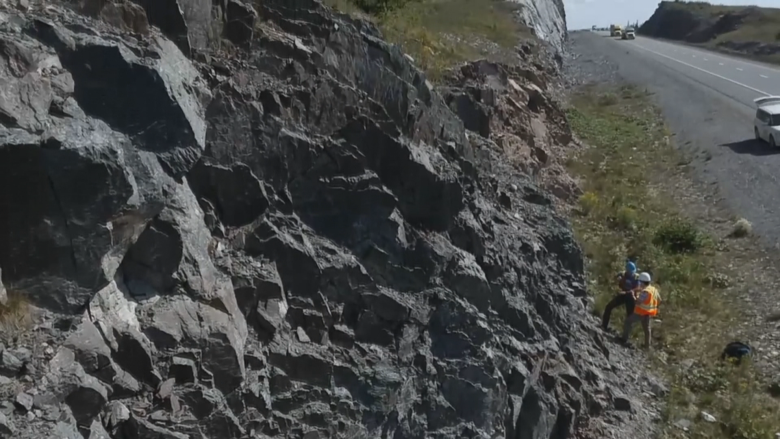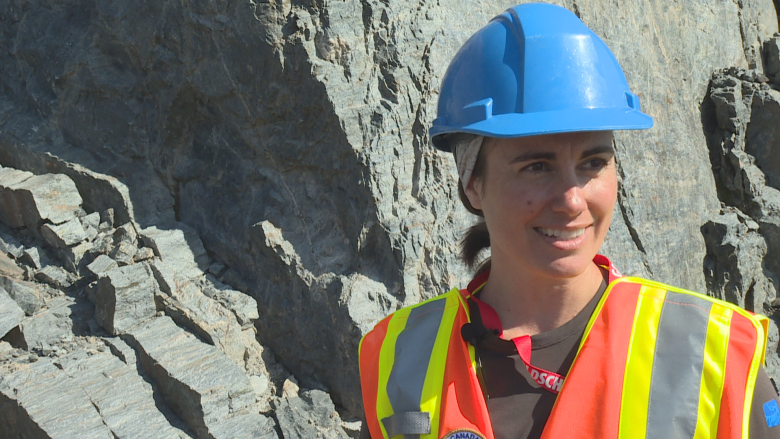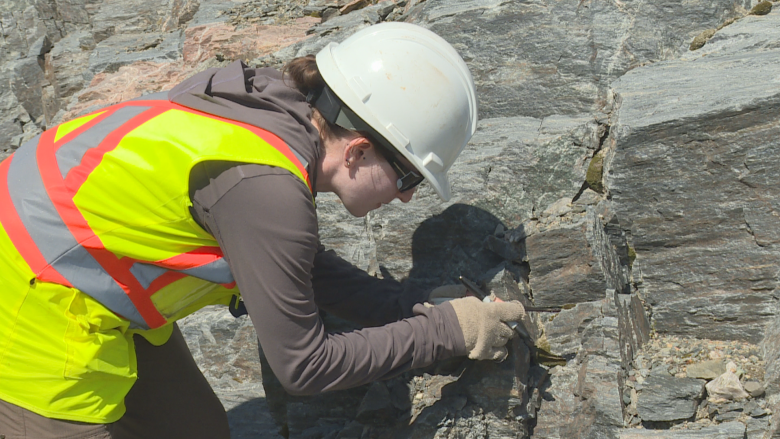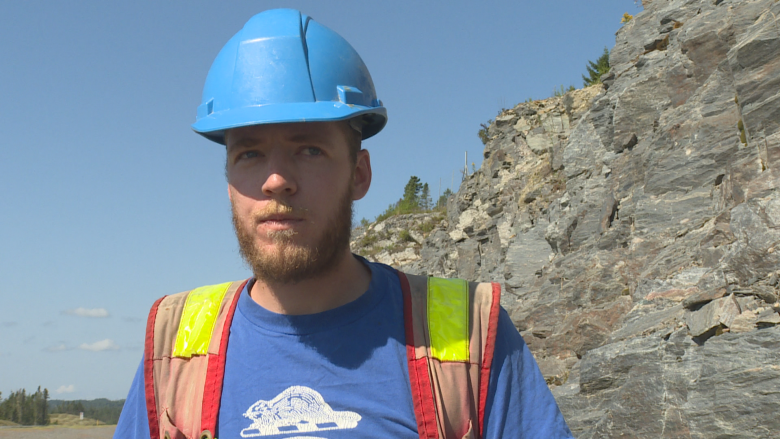Study of Appalachian mountain range hits the side of the road
Geologists working in southern New Brunswick are digging up the 100-million-year history of the Appalachian Mountains.
On the side of the highway.
A rock face along Highway 1 in Pocologan, about 50 kilometres west of Saint John, has caught the eye of geologists with the Canadian Geological Survey of Canada, so they are collecting samples next to the roaring traffic.
- Digging into history: UNB students uncover stories from Louisbourg burial ground
- Centuries-old graves being dug up near Louisbourg before they're lost
The goal of the project is to try to build a timeline of the mountain range's history and formation. Portions of the range stretch from the southern U.S. to parts of Newfoundland and Labrador.
"We're trying to piece together, also in space, what was happening," said Dawn Kellett, with the Canadian geological survey of Canada. "Which pieces were moving, what was deforming."
"It's these particular zones that we think are important for moving metals up into the near-surface, where we could access them."
Rock cuts that are the result of highway construction, such as the one in Pocologan, are useful to geologists.
They offer access to rock formations that would normally only be accessible with costly test drilling, followed by more expensive digging operations.
A zone of weakness
The Pocologan rock cut is of interest because it was once an area where the rocks would part, allowing the liquid elements below to squeeze to the surface, offering scientists a glimpse of what the Earth's makeup is farther down.
"When rocks are sliding past each other, this is a zone of weakness that allows fluids and melts to travel through the crust, which is normally pretty difficult to achieve," Kellett said.
"You can think of a big granite like you might see at Peggy's Cove — you can't really pass fluids or magma through that kind of rock."
But the study of one of the oldest things in New Brunswick doesn't stay on the side of the road. Researchers will take their findings and compare them to other locations to see which compositions align.
A better understanding
"Eventually, we'll probably walk up some rivers where we have likely the best exposure and we will find some other outcrops to correlate our observations here regionally," said Nicolas Piette-Lauzière, a PhD student at the University of British Columbia in Kelowna. He is working on the Appalachian Mountain range study.
"And get a better understanding of what our observations locally tell us more about the global story of its origins."
The crew will continue to collect samples throughout the summer months. Afterward, those materials collected will be transported back to various labs, including some in Ottawa, where they will be dated, classified and categorized.





